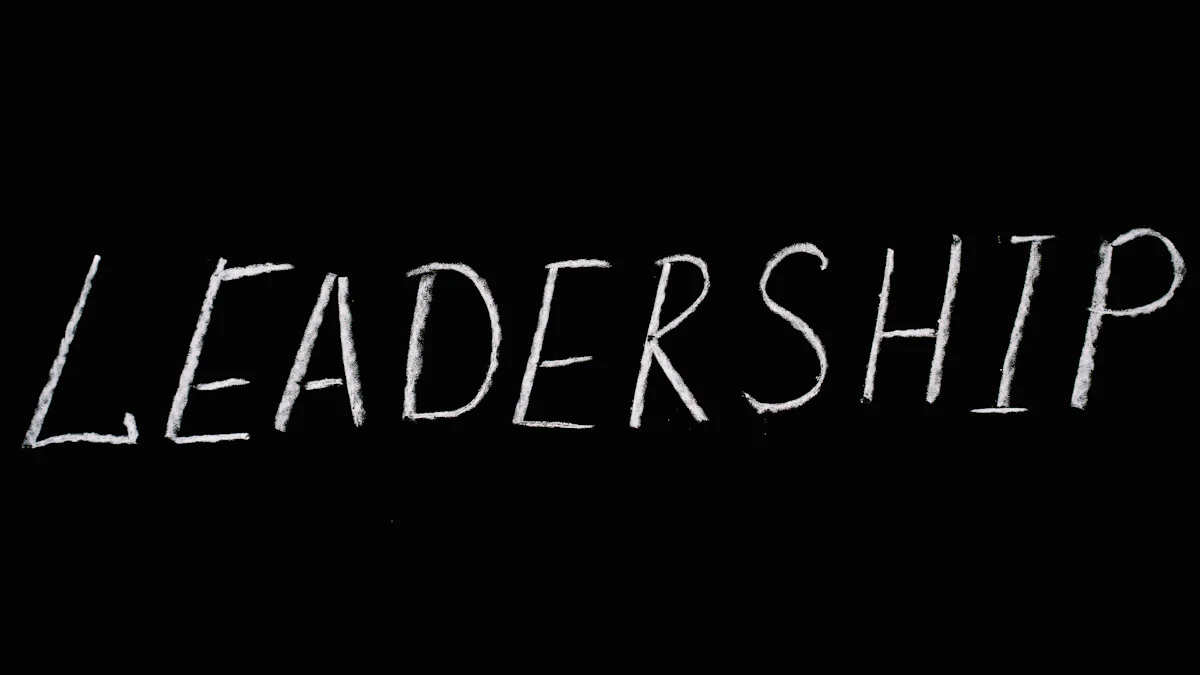

Change Leadership transforms organizations by guiding them through significant disruptions. Leaders inspire action and foster a vision for growth. Effective Change Leadership elevates success rates in change initiatives. Companies excel when they embrace employee mindsets, achieving up to four times more successful outcomes. Frontline employees play a crucial role, boosting success rates to 71%. Unlike Change Management, which focuses on processes, Change Leadership emphasizes people. Leaders who communicate effectively can optimize organizational change. Emotional intelligence becomes essential for navigating these transitions. Change Leadership empowers organizations to thrive in dynamic environments.
Understanding Change Leadership
Key Concepts and Principles of Change Leadership
Change Leadership involves several key concepts and principles that guide leaders in transforming organizations effectively. A clear vision and strategy form the foundation of successful Change Leadership. Leaders must articulate a compelling vision to inspire and motivate teams. A strategic approach ensures alignment with organizational goals.
Vision and Strategy
Vision serves as the guiding light for Change Leadership. Leaders craft a vision that resonates with the organization's mission. A well-defined vision provides direction and purpose. Strategy translates vision into actionable steps. Leaders develop strategies that align with the vision to achieve desired outcomes.
Communication and Influence
Effective communication is crucial in Change Leadership. Leaders convey messages clearly and persuasively. Open communication fosters trust and transparency. Influence plays a vital role in gaining support for change initiatives. Leaders use influence to inspire action and drive commitment.
Change Leadership vs. Change Management
Change Leadership and Change Management differ in focus and approach. Understanding these distinctions helps leaders navigate transformations successfully.
Definitions and Distinctions
Change Leadership emphasizes people and their role in transformation. Leaders inspire and motivate individuals to embrace change. Change Management focuses on processes and systems. It involves planning, organizing, and implementing change initiatives.
Roles and Responsibilities
In Change Leadership, leaders take on roles that involve vision-setting and motivation. Leaders engage with teams to foster a culture of change. In Change Management, managers handle logistical aspects of change. Managers ensure smooth execution of change processes.
Jim Hemerling, an expert in Change Management, states, "The key to successful transformation is putting people first." This approach highlights the importance of prioritizing individuals in Change Leadership.
Strategies for Effective Change Leadership

Change Leadership requires strategic approaches to navigate the complexities of organizational transformation. Leaders must adopt effective strategies to foster a culture that embraces change and thrives in uncertainty.
Building a Change-Ready Culture
A change-ready culture forms the backbone of successful Change Leadership. Organizations must cultivate an environment where innovation and collaboration flourish.
Encouraging Innovation
Innovation drives progress in Change Leadership. Leaders should create spaces that encourage creative thinking. Employees need opportunities to experiment with new ideas. Recognizing and rewarding innovative efforts motivates teams to push boundaries. A culture that values innovation propels organizations forward.
Fostering Collaboration
Collaboration enhances the effectiveness of Change Leadership. Teams achieve more when working together toward common goals. Leaders should facilitate open communication channels. Cross-functional teams bring diverse perspectives to the table. Collaborative environments lead to better decision-making and problem-solving.
Leading Through Uncertainty
Uncertainty challenges organizations during transitions. Change Leadership equips leaders with tools to manage resistance and maintain momentum.
Managing Resistance
Resistance often accompanies change. Leaders must address concerns openly and empathetically. Clear communication reduces fear and builds trust. Involving employees in the change process increases buy-in. A case study on managing change effectively highlights the importance of planning and employee involvement. Successful Change Leadership anticipates resistance and turns it into support.
Maintaining Momentum
Momentum sustains progress in Change Leadership. Leaders should celebrate small wins to keep teams motivated. Regular updates on progress reinforce commitment to change. Continuous feedback loops help identify areas for improvement. Maintaining momentum ensures that change initiatives reach their full potential.
Models and Frameworks of Change Leadership

Change Leadership thrives on structured models and frameworks. These tools guide leaders in navigating complex transformations. Leaders can use these models to inspire teams and achieve successful outcomes.
Popular Change Leadership Models
Change Leadership models provide a roadmap for effective transformation. Leaders can rely on these models to foster a culture of change and innovation.
Kotter’s 8-Step Process
John Kotter's 8-Step Process stands as a cornerstone in Change Leadership. This model emphasizes the importance of creating urgency. Leaders must inspire a sense of necessity for change. Building a guiding coalition follows. Leaders form a team to drive the change initiative. Developing a vision and strategy comes next. Leaders craft a clear vision to direct efforts.
Communicating the vision plays a crucial role. Leaders ensure that everyone understands the change direction. Empowering broad-based action is essential. Leaders remove obstacles that hinder progress. Generating short-term wins motivates teams. Celebrating small victories boosts morale. Consolidating gains and producing more change sustains momentum. Leaders reinforce the new approaches.
Anchoring new approaches in the culture finalizes the process. Leaders integrate changes into the organizational culture. This step ensures lasting impact. Kotter's model provides a comprehensive framework for Change Leadership.
ADKAR Model
The ADKAR Model offers a people-centric approach to Change Leadership. This model focuses on individual change. Awareness of the need for change marks the first step. Leaders help individuals understand why change is necessary. Desire to participate in the change follows. Leaders inspire individuals to embrace change.
Knowledge of how to change is crucial. Leaders provide training and resources. Ability to implement new skills and behaviors comes next. Leaders support individuals in applying new knowledge. Reinforcement ensures that changes stick. Leaders celebrate successes and provide feedback.
The ADKAR Model empowers leaders to address individual needs. This approach fosters a supportive environment for change. Leaders can use this model to guide teams through transitions.
Scientific Research Findings:
-
Short Case Study on Change Management highlights the importance of planning and communication.
-
Six Change Management Gurus and Their Lessons for Leaders emphasize the need for engagement and purpose.
-
Workplace Change Statistics reveal that many employees feel unprepared for change.
-
12 Change Management Statistics Senior Leadership Should Know show that change-ready organizations embrace possibilities.
-
The Top 5 Leadership Trends That Will Drive Success in 2024 stress the role of emotional intelligence in successful change initiatives.
Change Leadership models like Kotter's 8-Step Process and the ADKAR Model equip leaders with effective strategies. These frameworks guide leaders in fostering a culture of change. Leaders can inspire teams and achieve successful transformations.
Change Leadership stands as a powerful catalyst for organizational success. Leaders who embrace change inspire teams to achieve remarkable outcomes. Effective Change Leadership transforms vision into reality. Adaptive leaders recognize that change is constant and inevitable. Leaders must reinforce the vision for sustainable change management. Inspire engagement by connecting the need for change with a deeper sense of purpose. Embrace the strategies and models discussed to lead with confidence. Equip teams with tools and resources for success. Instill a culture of continuous learning and self-development. Lead your organization to thrive in dynamic environments.
FAQ
Change Leadership involves guiding an organization through significant transformations. Leaders inspire and motivate teams to embrace change. A focus on people distinguishes Change Leadership from Change Management.
Change Leadership plays a crucial role in organizational success. Effective Change Leadership helps organizations adapt to market changes. Leaders who prioritize people can achieve higher success rates in change initiatives.
Change Leadership emphasizes the human aspect of transformation. Leaders inspire individuals to embrace change. Change Management focuses on processes and systems. Managers plan and implement change initiatives.
Leaders should build a change-ready culture. Encouraging innovation and fostering collaboration are essential. Managing resistance and maintaining momentum help navigate uncertainty. Leaders must communicate effectively to inspire action.
Popular models include Kotter’s 8-Step Process and the ADKAR Model. Kotter’s model provides a structured approach to transformation. The ADKAR Model focuses on individual change. Both models guide leaders in achieving successful outcomes.
Leaders should address concerns openly and empathetically. Clear communication reduces fear and builds trust. Involving employees in the change process increases buy-in. Successful Change Leadership anticipates resistance and turns it into support.
Employees play a vital role in successful change initiatives. Frontline employees boost success rates significantly. Involving employees in the change process enhances engagement and commitment. Leaders should empower employees to contribute to change efforts.
Leaders should celebrate small wins to keep teams motivated. Regular updates on progress reinforce commitment to change. Continuous feedback loops help identify areas for improvement. Maintaining momentum ensures that change initiatives reach their full potential.
Communication, collaboration, and commitment are essential skills. Leaders must convey messages clearly and persuasively. Collaboration enhances decision-making and problem-solving. Commitment to the vision inspires teams to embrace change.
Leaders face challenges such as managing resistance and maintaining momentum. Adapting to market changes requires strategic thinking. Leaders must navigate emotional reactions and provide support. Successful Change Leadership involves overcoming these challenges with vision and agility.
Continue Reading About Change Leadership
10 Game-Changing Project Management Reporting Types!
Unlock project success with 10 must-know reporting types! Track progress, manage risks, and stay on budget like a pro.
Lewis
Mar 03, 2025
10 Must-Have Marketing Agency Reporting Tools for Your Success
Optimize your agency's performance with top reporting tools. Explore analytics, social media, SEO, and more for data-driven decisions and efficiency.
Lewis
Oct 09, 2024
15 Best Software Reporting Tools for 2025
Explore the top 15 software reporting tools for 2025. Compare features, pricing, and usability to find the best fit for your business needs.
Lewis
Oct 08, 2024
2025 Best Data Integration Solutions and Selection Guide
Explore top data integration solutions for 2025, enhancing data management and operational efficiency with leading platforms like Fivetran and Talend.
Howard
Dec 19, 2024
2025 Data Pipeline Examples: Learn & Master with Ease!
Unlock 2025’s Data Pipeline Examples! Discover how they automate data flow, boost quality, and deliver real-time insights for smarter business decisions.
Howard
Feb 24, 2025
2025's Best Data Validation Tools: Top 7 Picks
Explore the top 7 data validation tools of 2025, featuring key features, benefits, user experiences, and pricing to ensure accurate and reliable data.
Howard
Aug 09, 2024


